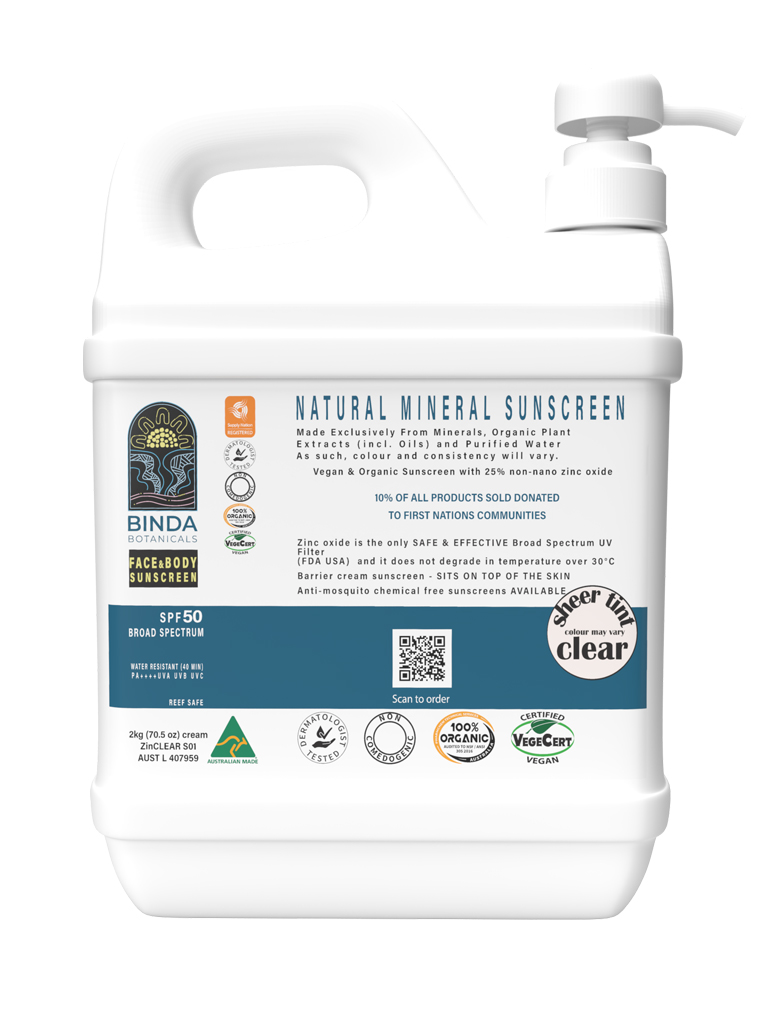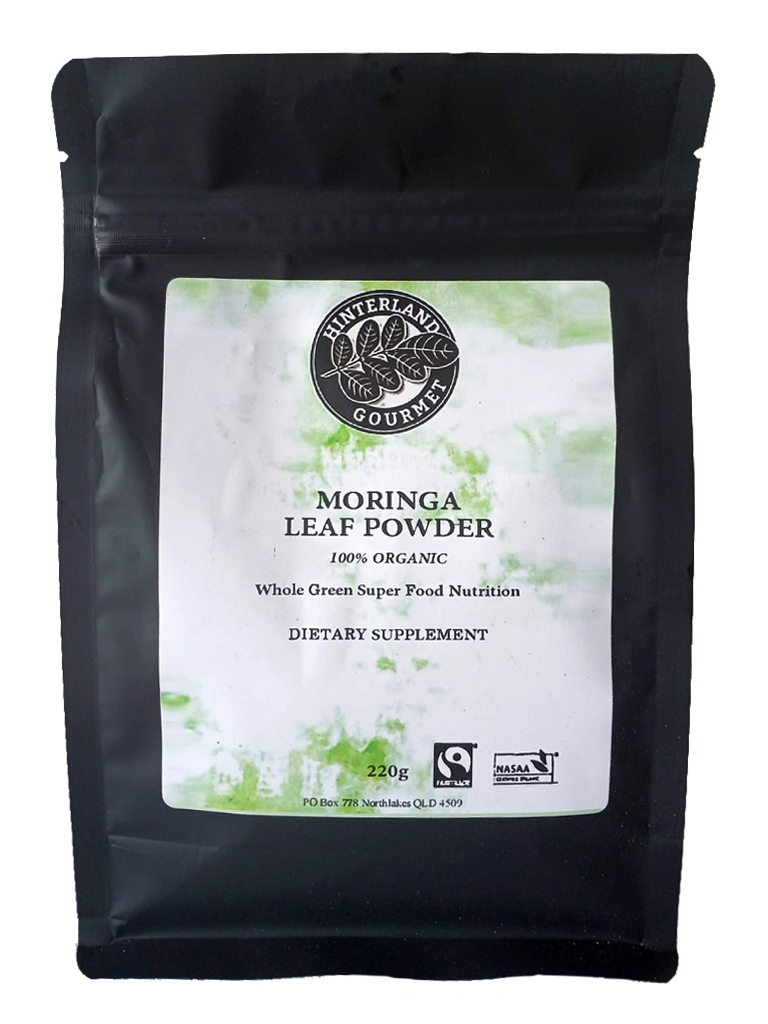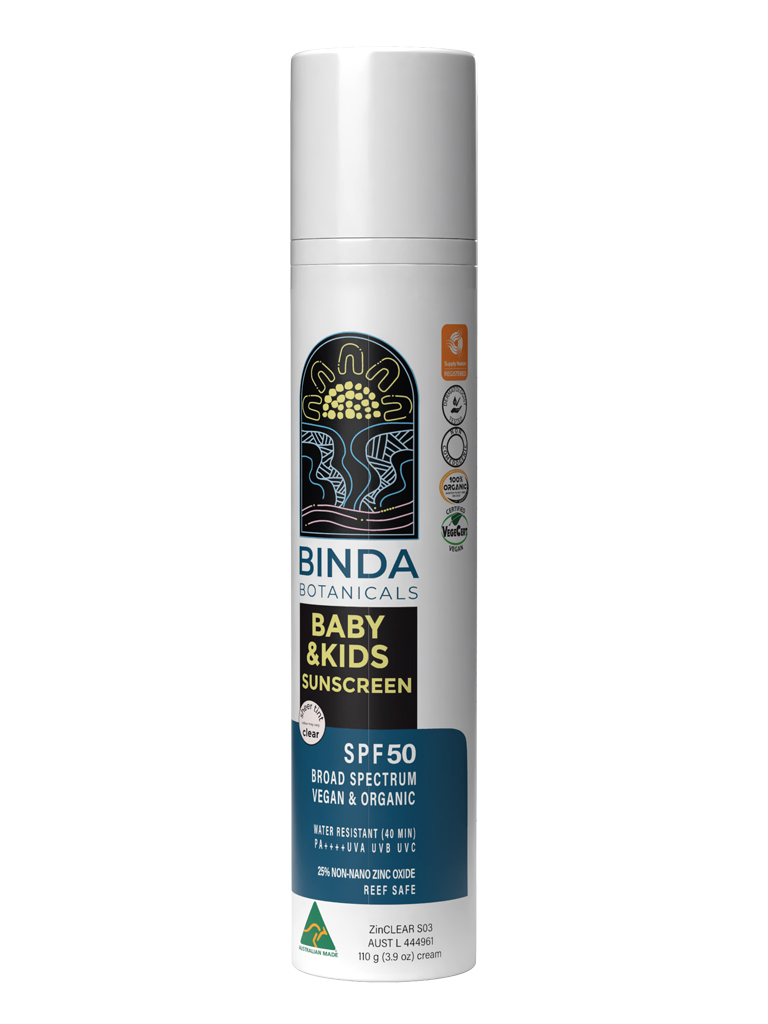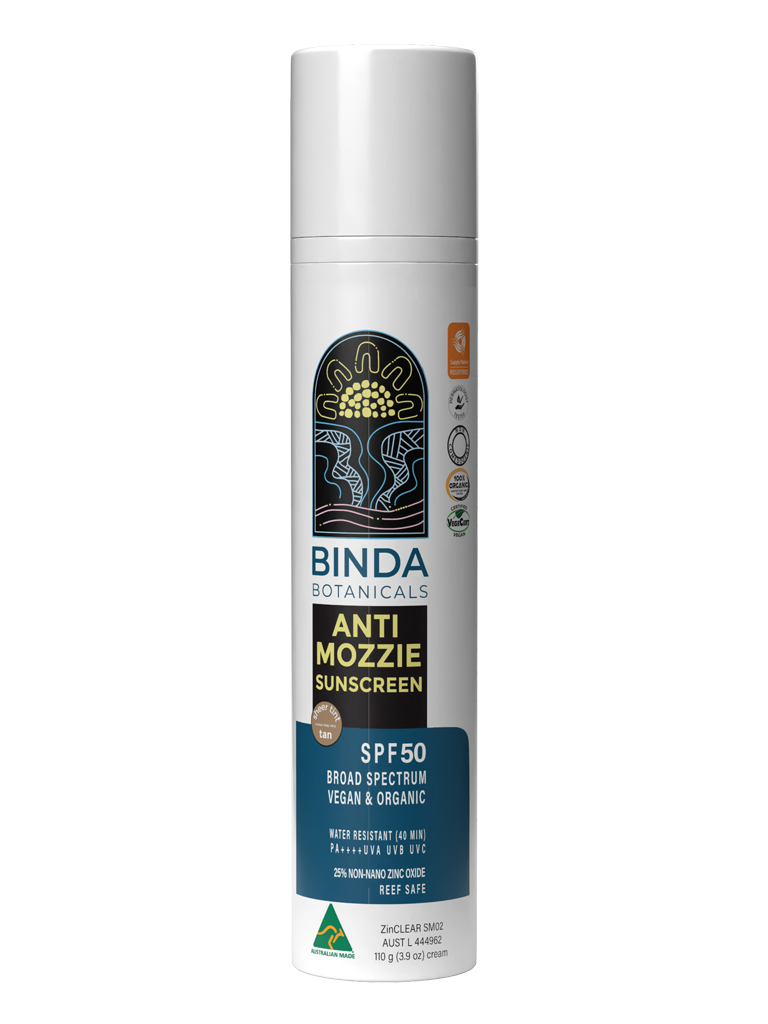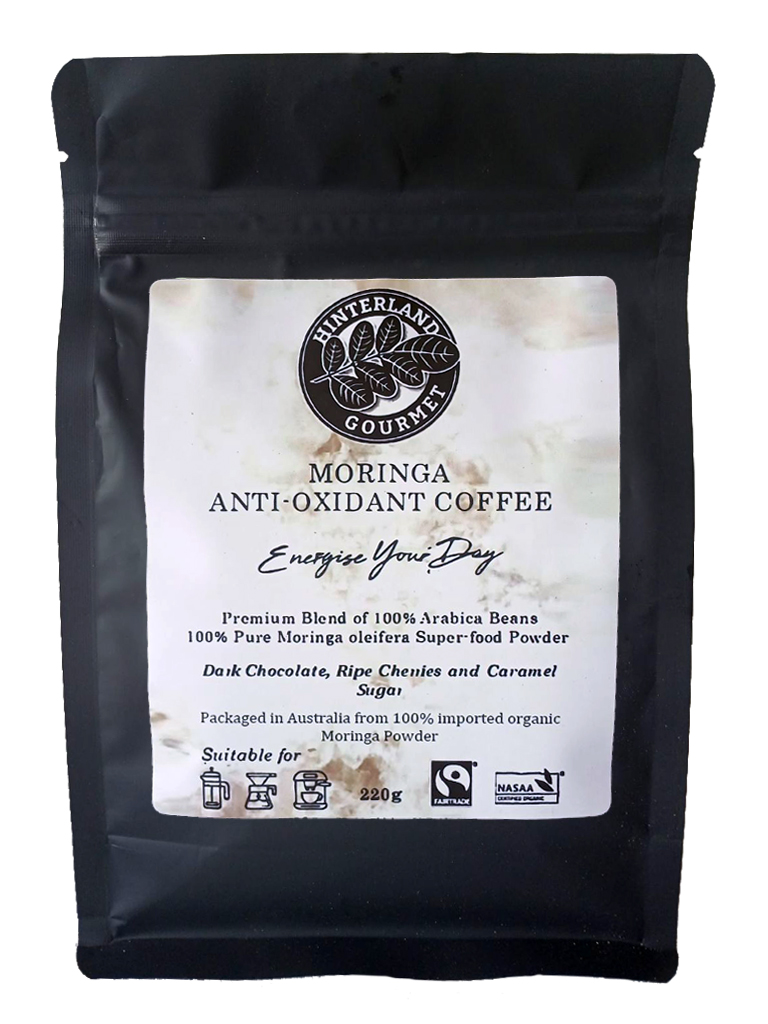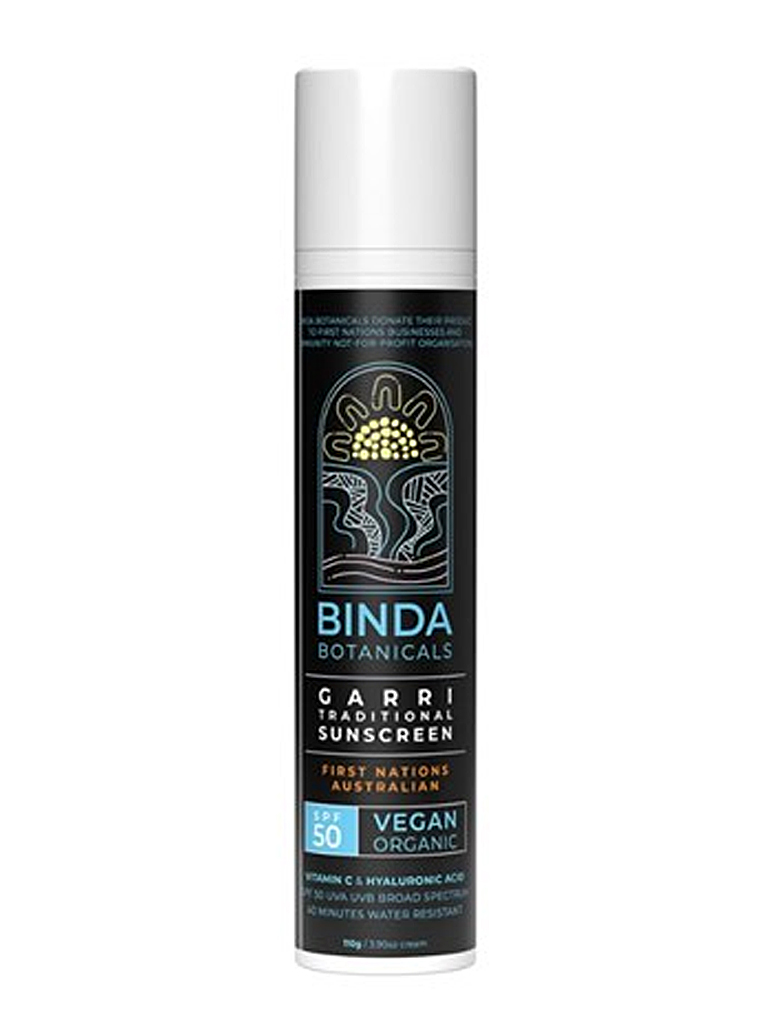This tree deserves a hug!
Moringa Oleifera, the most nutritious plant discovered to date, is known as ‘The Miracle Tree’ and ‘The Tree of Life’.
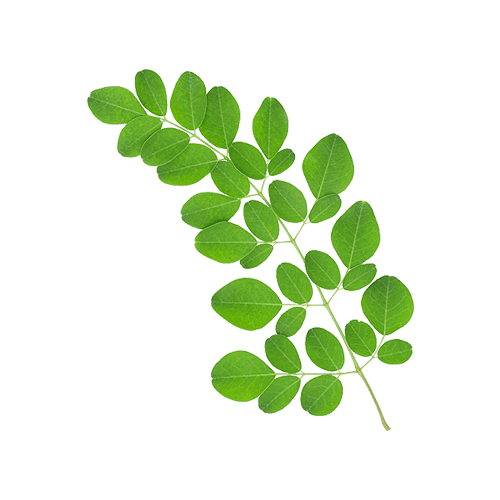
Moringa Oleifera is revered in many cultures for its extraordinary nutritional and medicinal properties.

- supplies nearly all of the requirements for optimum human nutrition
- is used as food and medicine
- has been used to treat over 300 ailments and shows promise in the treatment of cancer and many other diseases
- produces many valuable products, including protein rich animal feeds and contains natural crop promoting compounds.
- is used in numerous industrial applications; it produces an oil which never goes rancid.
- it is now used to inexpensively purify water
See our range of organic products
-
- Select options This product has multiple variants. The options may be chosen on the product page
-
$32.00

Moringa possesses an astonishing array of health benefits for humans and animals
Moringa could provide answers to many of the difficult problems faced by humanity.
Moringa grows extremely quickly in harsh conditions in tropical, arid and semi-arid regions AND provides more nutrition than a supermarket and offers more for true health than a pharmacy or health food store.
The Moringa tree is native to Northern India, where it was first described around 2000 BC as a medicinal herb, employed in the treatment of 300 ailments.
Moringa is a multipurpose tree with a wide variety of potential uses. The Moringa oleifera is a quick growing and drought resistant, slender, deciduous, perennial tree, which grows to about 10 m tall. It has fragrant, white or creamy-white flowers.
“Moringa could soon become one of the world’s most valuable plants” – Noel Vietmeyer, US Academy of Sciences.
Culinary uses of Moringa
The pods, leaves and seeds of Moringa are all highly nutritious. The leaves of the tree can be used fresh, cooked in the same way as spinach or dried and stored for months without requiring refrigeration.
The Moringa tree's fruit resembles long, thin beans or pea pods changing from white in color to brown when mature. The seeds are as highly prized as the pod, and number between 5 to 20 per fruit. The fruit has a taste similar to asparagus. Fresh pods are often served in much the same way as green beans..Moringa tree fruit look somewhat like drumsticks, which is why it is sometimes referred to as the "drumstick tree".
Moringa pods and greens are used regularly in many Asian traditions. In the Philippines Moringa/Malunggay leaves are used liberally in soups, stews with fish, prawns, and poultry. The fresh leaves are cooked in coconut milk to prepare ginattang malunggay.
A traditional Senegalese recipe uses Moringa greens as part of a sauce called Mboum. Fresh leaves are sautéed with onion, peanut butter, vegetable oil, smoked/dried fish, and seasoned with salt and pepper to taste.
In India and Pakistan, tender Moringa pods known as sahajan, are used in sahajan ki sabzi.
In South Indian states, both the pods and greens are used in curries (sambar), soups, and stews. In traditional Indian cuisine, Moringa fruit is often prepared in much the same way as beans and prepared in a variety of ways. They keep well over an extended period of time, so are often stored for later use.
Dry and powdered Moringa leaves can be added to diet in order to improve the nutritional quality of many foods! Bread, muffins, pastry, rolls, cakes can be prepared by mixing Moringa powder with wheat, maize, and rice flours.
“the nutritional properties of Moringa are now so well known that there seems to be little doubt of the substantial health benefit to be realized by consumption of Moringa leaf powder" -Jed Fahey, Sc.D. Johns Hopkins School of Medicine
Grow a Moringa tree and add the fresh leaves at the END of cooking, after turning off the heat. The taste is mild and Moringa leaves are well tolerated by even the fussiest eaters! There couldn't be an easier way to make sure your loved-ones are getting the nutrition they need to thrive, than through the regular consumption of Moringa fresh greens and dried Moringa powder!
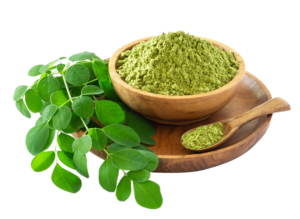
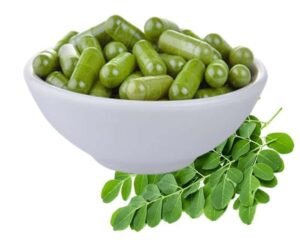
Medicinal uses of Moringa
In the Ayurveda medical tradition Moringa seed pods are crushed and applied topically to treat minor skin inflammations, warts and infections and ingested as a specific cure for worms and parasites.
Ayurveda practitioners often recommend Moringa pods for patients with digestive upsets and abdominal tumors.
Moringa leaves, with their high iron content are use in the treatment of anemia in the Philippines. Moringa roots and bark are used in cardiac and circulatory problems.
In recent times the chemical compounds in Moringa seed pods have been scientifically proven to reduce swelling and inflammation, making them valuable treatments for arthritis, rheumatism and other inflammatory diseases.
Moringa seed pods contain complex chemical compounds with antibiotic and antioxidant properties that can boost the body’s own natural immune system, such as Terygospermin, a potent antibiotic and fungicide effective against Staphylococcus aureus and Pseudomonas aeruginosa.
Modern science is now coming to understand what those in the East have known for centuries!
At Hinterland Gourmet we are dedicated to supplying the most nutrient dense Moringa on the planet!
The Moringa tree is an amazing ‘mineral sponge’ – sucking up nutrients that grasses and other plants simply cannot access. These minerals are transformed inside the plant into bio-available nutrition for animals and people. We have developed a very potent formulation that supplies over 70 minerals and trace elements to the Moringa trees. In this way we maximize the potential of the plant to provide the maximum in nutrient value to us.
